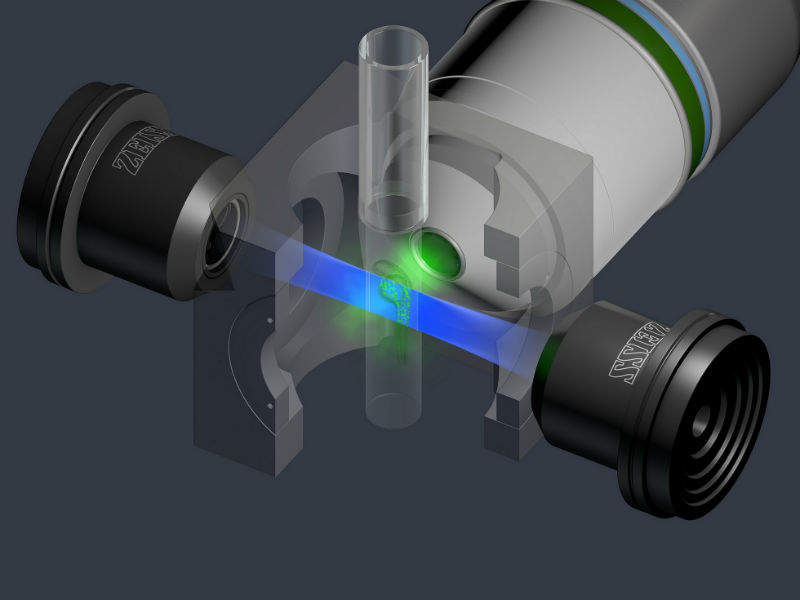
A study published in The Optical Society (OSA) journal Optics Letters has reported that combining light-sheet fluorescence microscopy with three-photon absorption has the potential to improve neuroscience and developmental studies by imaging deeper into tissue.
Light-sheet fluorescence microscopy is a relatively new technique that allows researchers to create 3D images of tissue using fluorescent tags.

Discover B2B Marketing That Performs
Combine business intelligence and editorial excellence to reach engaged professionals across 36 leading media platforms.
The study researchers detailed in their paper exactly how three-photon absorption can be used with light-sheet fluorescence microscopy to image deeper into tissues. They demonstrated their findings by using the combined technique to produce clear images throughout a spheroid of human embryonic kidney cells.
University of St Andrews researcher and team leader of the research project Kishan Dholakia said: “This demonstration is very important as it addresses an unmet need of better imaging at depth, which could help scientists gain better data about biological processes. This approach could be especially useful for neuroscience and developmental biology studies and might find application in imaging multiple samples in an automated way for drug discovery.”
The light required to image fluorescent labels can be damaging and sometimes deadly to delicate biological samples such as brain tissue. Light-sheet fluorescence microscopy is often referred to as a revolutionary technique because it allows fast, high-resolution imaging with little optical damage. It can illuminate a sample with just a thin sheet of light and other parts of the sample will not be unnecessarily exposed to light.
The study’s first author Adrià Escobet-Montalbán, also of the University of St Andrews, said: “We expect three-photon light-sheet fluorescence microscopy to make a large impact on imaging the brain in rodents such as mice and rats, where it could be used to capture very wide-field images with subcellular resolution.”

US Tariffs are shifting - will you react or anticipate?
Don’t let policy changes catch you off guard. Stay proactive with real-time data and expert analysis.
By GlobalDataThe researchers now aim to improve the technique by using laser systems at longer wavelengths which are specifically designed for three-photon absorption. They predict that this will enable imaging at increased depth. The researchers are also trying to develop a way to detect light emitted from fluorescent labels deep inside samples.





